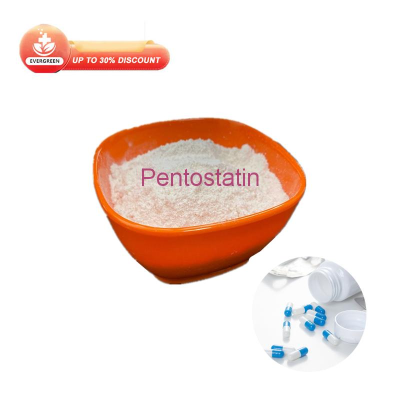-
Categories
-
Pharmaceutical Intermediates
-
Active Pharmaceutical Ingredients
-
Food Additives
- Industrial Coatings
- Agrochemicals
- Dyes and Pigments
- Surfactant
- Flavors and Fragrances
- Chemical Reagents
- Catalyst and Auxiliary
- Natural Products
- Inorganic Chemistry
-
Organic Chemistry
-
Biochemical Engineering
- Analytical Chemistry
- Cosmetic Ingredient
-
Pharmaceutical Intermediates
Promotion
ECHEMI Mall
Wholesale
Weekly Price
Exhibition
News
-
Trade Service
Clemens Oliver Hanemann et al.
of the School of Hygiene at the University of Plymouth Peninsula Medical School, UK, evaluated the biological role of miR-497 and miR-219 in the diagnostic grading of meningiomas and their correlation
with methylation status.
The results were published online in the October 2022 issue of the Journal of Neuro-Oncology
.
- Excerpted from the article chapter
【Ref: Abdelrahman A, et al.
J Neurooncol.
2022 Oct; 160(1):137-147.
doi: 10.
1007/s11060-022-04126-0.
Epub 2022 Sep 8.
】
Research background
At present, the WHO grade of meningiomas mainly depends on histo-cell morphology and molecular characteristics, and can be divided into grade I (benign), grade II (intermediate, atypical) and grade III (malignant, anaplastic).
This integrative diagnosis helps guide adjuvant therapy and prognosis
after tumor resection.
Without histologic analysis, there is insufficient
reliance on clinical and radiographic findings alone to determine meningioma's progression.
Recent studies have found that DNA methylation can be used as a graded predictor of meningioma, MCben-1, MCben-2 and MCben-3 are benign, MCint-A and MCint-B are intermediate types, with a higher risk of proliferation and recurrence, and MCmal is malignant and has a high risk of
recurrence progression.
This taxonomy synergistically determines decisions
such as periodic postoperative testing, adjuvant therapy, or radiotherapy.
MicroRNAs (microRNAs, miRNAs) are a group of tiny noncoding RNAs between 19 and 22 nucleotides in length, which are promising tumor biomarkers; They play a role
in tumorigenesis, anti-tumor regulation, and immunosuppression.
In a variety of tumors, circulating miRNA pinpoints the source of malignant tissue and, because it is released into the bloodstream, can be detected
in plasma, serum, and exosomes.
The study found that microRNA-497 (miR-497) was downregulated in a variety of malignant tumors and was related to prognosis, and the expression of tumor proliferation was reduced, suggesting that it may be a tumor suppressor
.
A microRNA-219 (miR-219) was also found to be elevated in meningioma serum samples
.
But their role in the diagnosis and treatment of meningiomas is unclear
.
Clemens Oliver Hanemann et al.
of the School of Hygiene at the University of Plymouth Peninsula Medical School, UK, evaluated the biological role of miR-497 and miR-219 in the diagnostic grading of meningiomas and their correlation
with methylation status.
The results were published online in the October 2022 issue of the Journal of Neuro-Oncology
.
Research methods
The authors collected serum samples from 74 patients with meningioma, including 25 WHO-I, 25 WHO-II, and 24 WHO-III, as well as 53 healthy controls, to evaluate the relationship
between miR-497 levels in serum and exosomes and meningioma-grading diagnosis.
Subsequently, the combined diagnostic value
of miR-497 and miR-219 was evaluated by combining the serum miR-219 levels of 56 meningioma patients, including 22 WHO-I patients, 14 WHO-II patients, and 20 WHO-III patients.
Study results
The results of the study found that compared with the control group, the level of miR-497 in serum and exosomes in patients with meningiomas was significantly downregulated (p<0.
0001), indicating that miR-497 has good diagnostic value<b20> for meningioma.
Applying ROC analysis, the AUC value was 0.
9374 (95% CI, 0.
8898-0.
985) for serum miR-497 level and 0.
8789 for exosome miR-497
level.
Further studies on the effect of miR-497 in serum and exosomes on meningioma-grading, compared with low-grade samples (WHO-I grade), miR-497 in serum and exosomes in high-grade (WHO-II or III) patients decreased significantly (p=0.
0084; p=0.
0217).
Applying ROC analysis, serum miR-497 level AUC value was 0.
7304 and exosome miR-497 level AUC value was 0.
7343, while exosome miR-497 was more sensitive than serum miR-497 in distinguishing WHO-I from class II and WHO-III samples (i.
e.
, AUC=0.
8939>AUC=0.
613).
Combined with the expression levels of miR-219 in different WHO grade meningiomas, it was found that miR-497 and miR-219 jointly distinguished WHO-I and II and WHO-III grade AUC was 0.
9311, and the AUC that distinguished WHO-I grade and WHO-II and III grade was 0.
8009, both of which were significantly higher than the results
of miR-497 when diagnosed alone.
Finally, the authors analyzed the correlation between methylation status and miR-497 and miR-219 in meningioma, and found that benign methylation levels were associated with lower levels of miR-219, while miR-497 was completely opposite
.
Subsequently, the authors used ROC analysis to evaluate the role of miR-497, miR-219 and their combinations in the identification of methylation states, and found that the combination of miR-497 and miR-219 diagnosed AUC=0.
8776, which was significantly higher than the AUC values of a single (0.
6825 and 0.
6566).
Conclusion of the study
In summary, the results of this study show that serum miR-497 is a simple and effective biomarker for differentiating meningiomas from meningiomas, which can be used for the diagnosis and grading of meningiomas, and the combination of miR-497 and miR-219 can improve the accuracy of
meningiomas classification.
This study is the first to explore the relationship between meningioma's circulating miRNA and methylation status, but further research
is needed.







